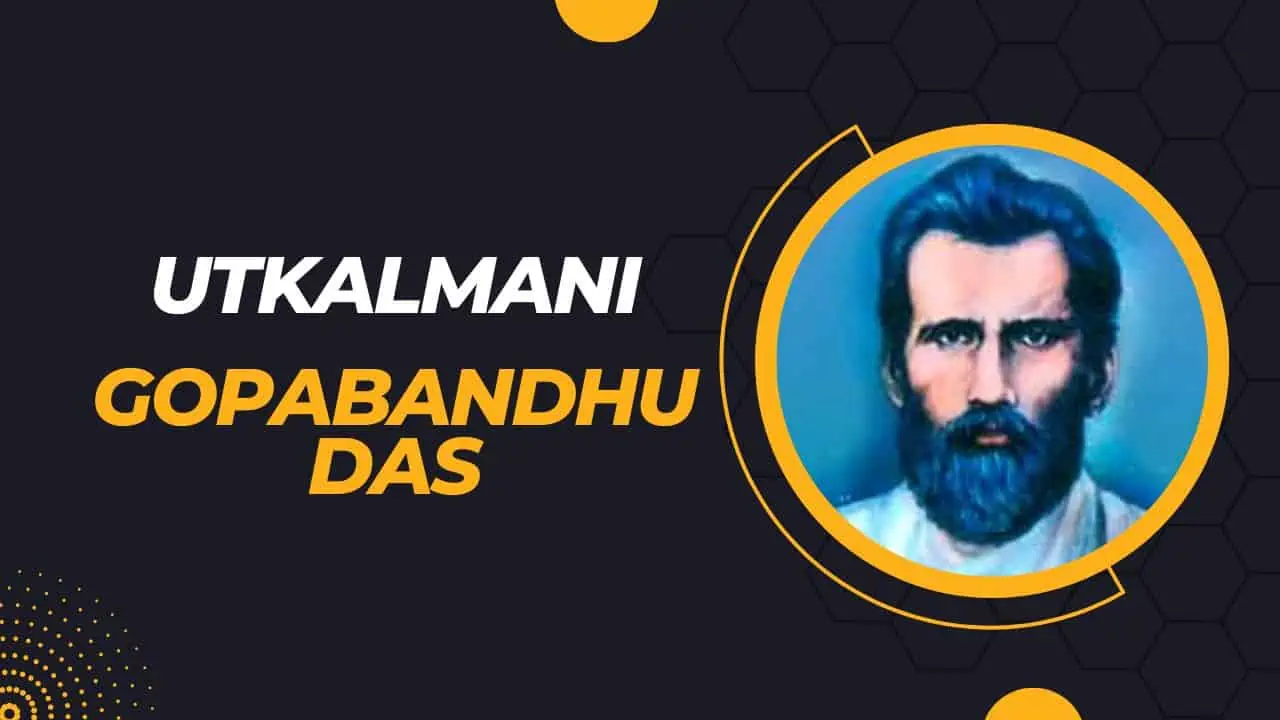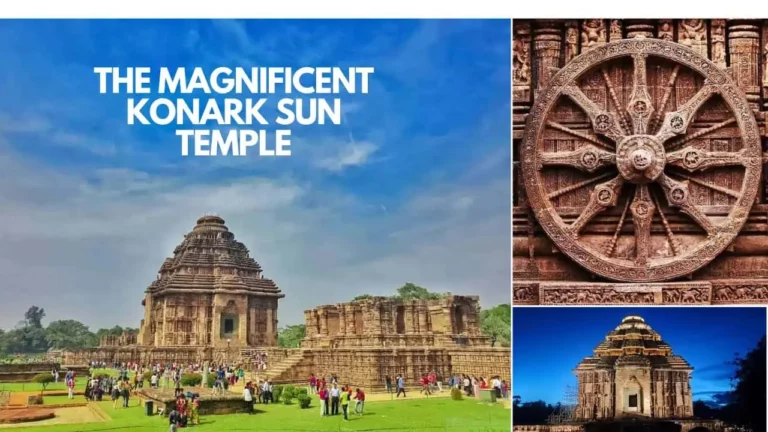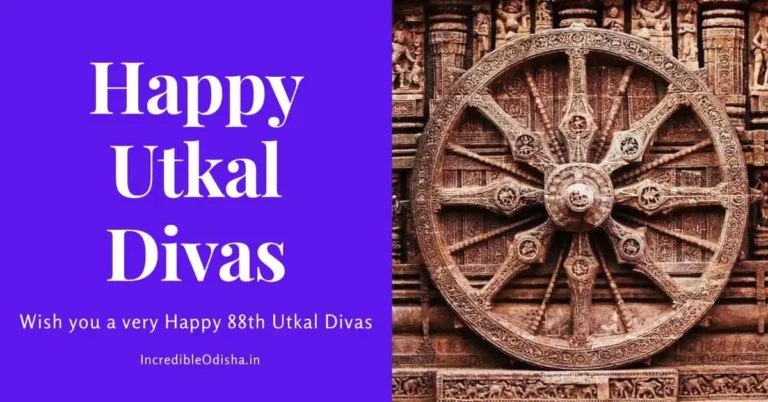Utkalmani Gopabandhu Das – The Gem of Odisha
Utkalmani Gopabandhu Das also known as the “Gem of Odisha” was an Indian freedom fighter, social reformer, and journalist from Odisha, who dedicated his life to the betterment of his fellow Odias. He was born on October 9, 1877, in the village of Satyabhamapur in the district of Puri, Odisha. Utkalmani Gopabandhu Das passed away on 17th June 1928. In this article, we will look at Utkalmani Gopabandhu Das’s life story, Contribution to the freedom struggle and family details.

Utkalmani Gopabandhu Das Details
Here are the key details about Utkalmani Gopabandhu Das:
| Name | Utkalmani Gopabandhu Das |
|---|---|
| Born | October 9, 1877 |
| Place of Birth | Suando, Puri, Odisha, India |
| Education | Ravenshaw College, Kolkata University |
| Profession | Social Activist, Writer, Politician, Freedom Fighter |
| Contributions | Co-founder of Utkal Sammilani, established Satyabadi School, promoted Khadi and Village Industries, worked for the upliftment of the downtrodden |
| Political Affiliation | Indian National Congress |
| Awards | posthumously awarded Bharat Ratna, Odisha’s highest civilian award is named after him (Gopabandhu Kreeda Puraskar) |
| Death | June 17, 1928 |
Note: The above table includes only a few of the many contributions and achievements of Utkalmani Gopabandhu Das.
Utkalmani Gopabandhu Das Early Life Story and History
From a young age, Gopabandhu was deeply committed to social service. As a student, he founded a voluntary corps, the Puri Seva Samiti, to provide aid to cholera victims. This movement eventually led to the establishment of a separate hospital for cholera patients in Puri. Gopabandhu attended Ravenshaw College in Cuttack, where he formed the Kartavya Bodhini Samiti to encourage his peers to take on social, economic, and political issues.
While pursuing his law degree in Kolkata, Gopabandhu established a labour union and night schools for Odia labourers and cooks. He became involved with the Vande Mataram group and was inspired to reform society by improving the education system. He joined the Indian National Congress and became the founder president of the Utkala Sammilani in 1903. He was imprisoned several times for his participation in the Indian independence movement.
Utkalmani Gopabandhu Das was also a pioneering educator, establishing the Satyavadi Vana Vidyalaya in 1909, an open-air school known for its diversified curriculum, community approach to living and learning, and emphasis on social service. His innovations at the school were later adopted by American educator John Dewey and popularized around the world. He assembled a team of dedicated, patriotic teachers, known as the “Big Five”, who were instrumental in the socio-cultural renaissance and national education in Odisha.
As a journalist, Utkalmani Gopabandhu Das was a pioneer of Odia journalism and made it accessible to the common man. He founded the monthly magazine “Satyabadi” in 1914 and the weekly newspaper “The Samaja” in 1919, which became the most popular newspaper in Odisha. Gopabandhu’s literary works, including his poems and novels, were marked by nationalistic fervour and encouraged young people to work towards national integration.
Utkalmani Gopabandhu Das’s selflessness and dedication to the people of Odisha were evident in his actions throughout his life. He would often put the needs of others before his own, even at the expense of his own health. He died on June 17, 1928, while attending a fundraiser in Lahore for flood victims in Odisha. Gopabandhu’s contributions to the Indian independence movement, social reform, and education continue to be remembered and celebrated in Odisha, and he is fondly remembered as the “Utkalmani” or “Gem of Odisha”.
Utkalmani Gopabandhu Das – The Freedom Fighter
Utkalmani Gopabandhu Das was a well-known freedom fighter, journalist, and social reformer from Odisha. He played an instrumental role in the Indian independence movement and was a close associate of Mahatma Gandhi. He was deeply committed to the cause of Indian freedom, and actively participated in non-violent protests against British rule.
Gopabandhu’s political journey began with Utkala Sammilani in 1903, but he encouraged others to merge this with the National Congress to make the Odia movement a part of the Indian National Movement. This led to him becoming the founder president of Congress in Odisha. He was imprisoned several times for his participation in the freedom struggle.
Gopabandhu’s writings, speeches, and political activities were focused on the upliftment of the people of Odisha and the freedom of India from British rule. He was a strong advocate of non-violence and believed in the power of peaceful protest to bring about change. He also played a key role in bringing the Congress Party to Odisha and was able to inspire a large number of people in the state to join the freedom movement.
One of his famous contributions to the freedom struggle was during the Non-cooperation Movement of 1920-22, where he led the movement in Odisha and was arrested for his participation in it. He also took part in the Salt Satyagraha in 1930.
Utkalmani Gopabandhu Das’s contributions to the freedom struggle were not just limited to political activities. He also used his position as a journalist to raise awareness about the Indian independence movement and to mobilize support for it. He published a monthly magazine called ‘Satyabadi’ in 1914 and started the weekly newspaper The Samaja in 1919, which became the most popular newspaper in Odisha.
Consider reading: Utkal Gourav Madhusudan Das
Utkalmani Gopabandhu Das Family Details
Gopabandhu Das, revered as ‘Utkalmani’ (Jewel of Orissa), was born into a middle-class family on October 9, 1877, in the small village of Suando, Puri district, Orissa. His father, Sri Daitari Das, was a Mukhtiar (a type of lawyer) and his mother was Srimati Swarnamayee Devi.
He had an elder brother, Sri Narayan Das. Despite their humble origins, Gopabandhu’s family provided a nurturing environment, influencing his early life and education significantly. His father’s legal practice in the locality and his early education in the village pathsala laid the foundation for his later achievements and humanitarian work.
Gopabandhu Das’s personal life was marked by profound tragedies and deep commitments to social service. At the young age of twenty-eight, he suffered the loss of his wife. Before this, he had also experienced the heartbreak of losing all three of his sons. Despite these personal losses, Gopabandhu Das remained dedicated to his vision of social reform and educational development.
Gopabandhu Das had two daughters, whom he entrusted to the care of his elder brother, along with a share of his property in the village. This decision reflected his commitment to a life of service over personal or familial interests. Gopabandhu Das chose not to remarry, even when he was of marriageable age, further demonstrating his extraordinary dedication to the greater societal good.
Utkalmani Gopabandhu Das’s Hobby
Utkalmani Gopabandhu Das was a man of many talents and interests. One of his hobbies was writing. He was a prolific writer, and his literary works, including his poems and novels, were marked by nationalistic fervour and encouraged young people to work towards national integration.
While in Hazaribagh Jail in 1922-24, Utkalmani Gopabandhu Das wrote a heart-touching novel called ‘Bandira Atmakatha’ (Biography of a Prisoner) expressing his love for the people of Odisha. He also wrote several other literary works such as ‘Abakasha Chinta’, ‘Go-Mahatmay’, ‘Nachiketa Upakhyana’, ‘Karakabita’ and ‘Dharmapada’.
Another hobby of Utkalmani Gopabandhu Das was teaching. He was a pioneering educator and established the Satyavadi Vana Vidyalaya in 1909, an open-air school known for its diversified curriculum, community approach to living and learning, and emphasis on social service. He assembled a team of dedicated, patriotic teachers, known as the “Big Five”, who were instrumental in the socio-cultural renaissance and national education in Odisha.
He was also an avid reader, he loved reading books on various subjects like literature, history, philosophy, and social science.
FAQs on Utkalmani Gopabandhu Das
Who was Utkalmani Gopabandhu Das?
Utkalmani Gopabandhu Das was an Indian freedom fighter, social reformer, and journalist from Odisha. He was also known as the “Gem of Odisha” for his contributions to the Indian independence movement, education and journalism.
When and where was Gopabandhu Das born?
Gopabandhu Das was born on October 9, 1877 in the village of Satyabhamapur in the district of Puri, Odisha.
What was Gopabandhu Das’ role in the Indian independence movement?
Gopabandhu Das was an active participant in the Indian independence movement. He was a member of the Indian National Congress and was a close associate of Mahatma Gandhi. He actively participated in non-violent protests against British rule and played a key role in bringing the Congress party to Odisha
What were Gopabandhu Das’ contributions to education and journalism?
Gopabandhu Das was a pioneering educator and established the Satyavadi Vana Vidyalaya, an open-air school known for its diversified curriculum, community approach to living and learning, and emphasis on social service. He was also a prominent journalist and published a monthly magazine called ‘Satyabadi’ in 1914 and started the weekly newspaper ‘The Samaja’ in 1919, which became the most popular newspaper in Odisha.
What were Gopabandhu Das’ hobbies?
Gopabandhu Das was a man of many talents and interests. He was a prolific writer and an avid reader. He loved writing poetry, novels, and other literary works. He was also a passionate teacher and educator.
When did Gopabandhu Das pass away?
Gopabandhu Das passed away on June 17, 1928. He fell ill while attending a fundraiser in Lahore for the flood victims of Odisha and never recovered from the illness.



